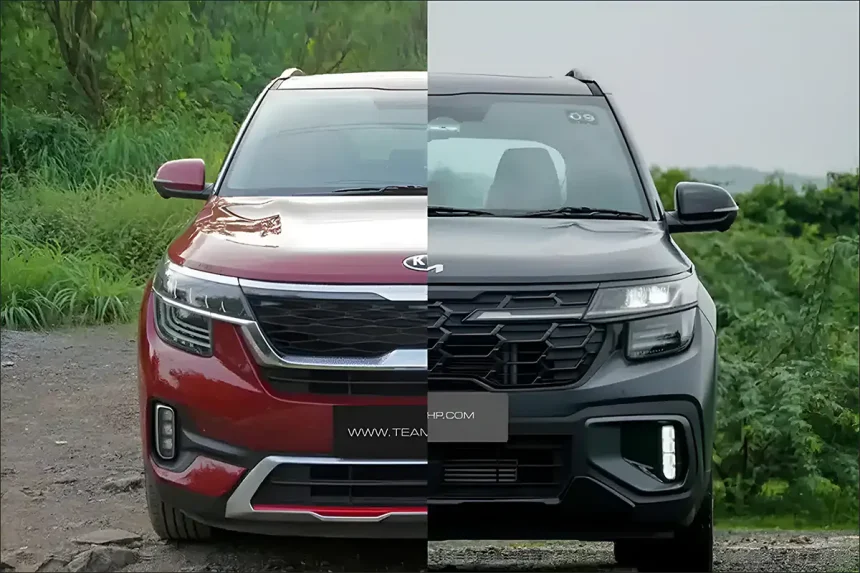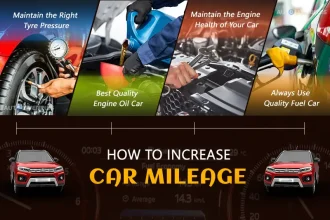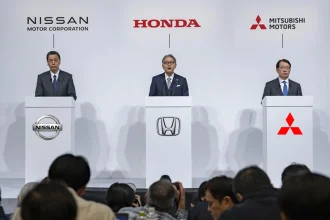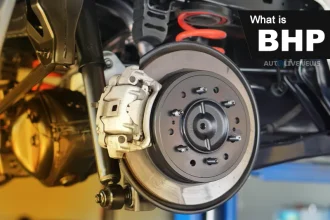Imagine this: You’re scrolling through a car website on your phone. You spot a blog that states, ‘Best Upcoming Cars! These New Cars Are Launching Soon!’. You click it out of curiosity. At number three, you spot the Jeep Wrangler. But this isn’t a new car! It has been out for at least a few years, hasn’t it? We bet you’re confused.
Thankfully, we’re here to help. Let’s break down what is facelift car, why facelifts happen, what changes when a car is facelifted, why they are relevant, and more.
You may be familiar with the term ‘facelift, which refers to a cosmetic procedure. People get facelifts to smooth out their wrinkles and improve their appearance. A car facelift is quite similar, actually. We can define a facelift in cars as a redesign or ‘refreshed’ version of an existing car model.
What is Facelift Car? Why Do Cars Get Facelifted?
A car model usually stays in production for about 7-8 years. Would you buy a car that was designed a decade ago? Not! That car won’t even have a touchscreen infotainment system. That’s where facelifts come in. Car facelifts give older vehicles a fighting chance against newer ones. Sometimes after a car is released, the manufacturer releases a new, ‘refreshed’ version and adds in a few exterior and interior features to make it comparable to newer launched cars.
Sometimes, a carmaker may have completely changed their ‘family look’, which is the brand’s identity represented through exterior and interior styling. Often, all cars made by a marque feature similar design language or share key elements like similarly designed grilles, logos, doors, etc. For example, BMW cars always use kidney grilles, all Mercedes-Benz cars feature radiator grills, and Rolls-Royce cars are equipped with their signature Pantheon grilles.
An older car might then get a facelift to make it appear similar to the brand’s lineup, design-wise. Hyundai has gradually changed its design language from simple and inoffensive to sporty and edgy. This change is easy to notice while observing the Hyundai Verna’s evolution throughout the years.
Since cars are an in-demand consumer good, the automobile sector has evolved to be highly competitive. New cars are launched every other month. The new-age consumer has adopted the adage of ‘raat gai, baat gai’. Our short attention spans need to be bombarded with heaps of advertisements to even remember old products. Car makers know that the attention and sales that come with a new car launch will slow down once enough time has passed.
Summarizing what is Facelift Car:
A car facelift is basically the update a car receives sometime around the middle of its life. Some believe that facelifts are restricted to minor cosmetic updates, but in reality, almost any part of the car can be modified or changed during a facelift. A car facelift can include changes to the interior, exterior, tech, or even safety features.
The main reason behind a car’s facelift is to increase its novelty and keep it up-to-date. A facelift is also called a mid-generational refresh. A facelift car is usually built on the same styling and platform but features alterations to the front fascia, taillights, interior elements, and mechanical upgrades to the suspension, engine, or transmission.
So to refresh our memories and ensure that the car can compete with newer cars in its segment, car makers launched a facelifted version. After a few facelifts, the car will receive a generational update or be replaced by another model.
Also read: What is a Hatchback Car? Pros, Cons, and More!
What Is the Difference Between a Facelift and a New Generation?
It is easy to get confused between the two. Both facelifts and generational updates share the same goal: to maintain market value and improve sales by keeping all their car models up-to-date.
Facelifts: These occur every 3–4 years. They most often carry refreshed interior and exterior styling, new features, and new cosmetic options. Sometimes a facelift may introduce a mechanical upgrade, such as a new engine or gearbox. Now that you know what is facelift car is, let’s understand how they differ from generational updates.
Generational updates: A generational update is a much more thorough process and often changes the car to a greater extent. The car is completely redesigned and usually built on a newer platform or with newer technology. Generational updates are important when the car has been around for a long time and facelifts aren’t enough to keep it relevant.
Facelifts can occur every year, but generational updates aren’t frequent as they cost the manufacturer a lot more. Changes in the car’s functional parts rarely occur during facelifts but are generally common in generational updates. The generational update will also pay more attention to the latest emission norms and automotive trends.
What Changes When a Car is Facelifted?
While facelifts usually introduce changes in exterior styling, there may be other upgrades, such as higher-quality interiors or a more powerful engine. So what exactly *can* change in a facelifted car? Let’s take a closer look.
Exterior Changes
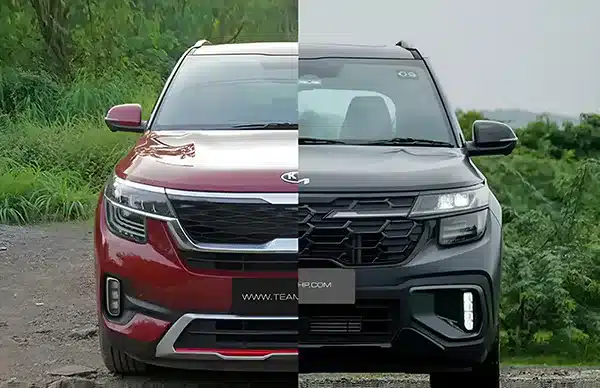
What is a facelift car that changes most from the previous car model? It’s external styling and appearance, of course. That’s why it’s called a ‘facelift since the front fascia features the most significant changes. Often, the grilles, bumpers, headlights, and taillights may be resized or redesigned. For example, the Kia Seltos pictured above features redesigned headlights, which give it a smarter and sleeker appearance.
Lighting may be changed from ordinary bulbs to LEDs. The size, shape, and position of DRLs (those always-on lights next to your headlights) will change as well. Just changing the DRLs can affect the car’s appearance a lot. You may also see facelifted cars use a different style of standard wheels and be available with new optional wheel designs and color choices.
Interior Changes:
Yes, the first thing we see is a car’s exterior. But we spend more time inside a car than we do looking at it. So many cars have great-looking exteriors, but what matters more is when we feel comfortable inside.
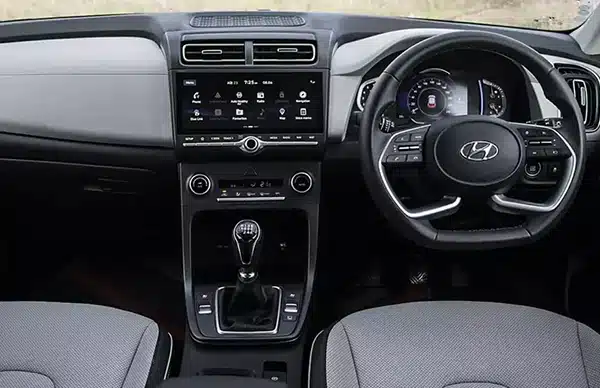
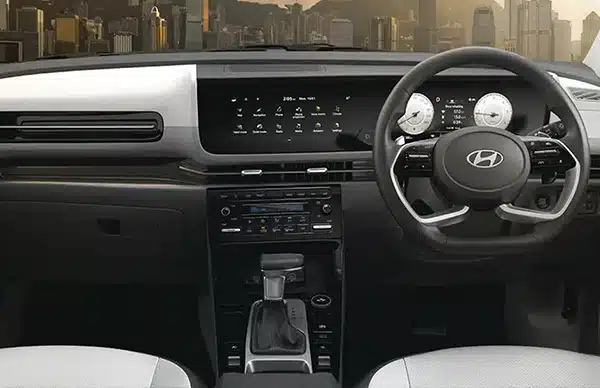
So what is facelift car doing differently on the inside? A facelift may include the following interior changes: new trims, upholstery, bigger infotainment displays, and maybe even a new steering wheel. Bonus points if it is covered in leather. There may be new air vent designs introduced or rear-seat vents added.
Car manufacturers will often try to make the facelifted car’s interior feel as equipped as a newly launched car. Sometimes the facelift car may include completely restyled dashboards or new infotainment systems. For example, the facelifted Hyundai Creta pictured above.
Tech Updates:
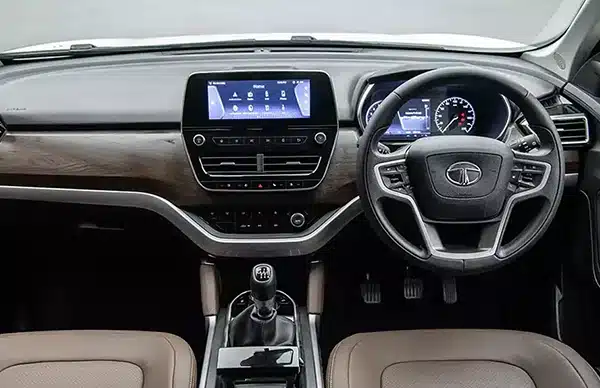
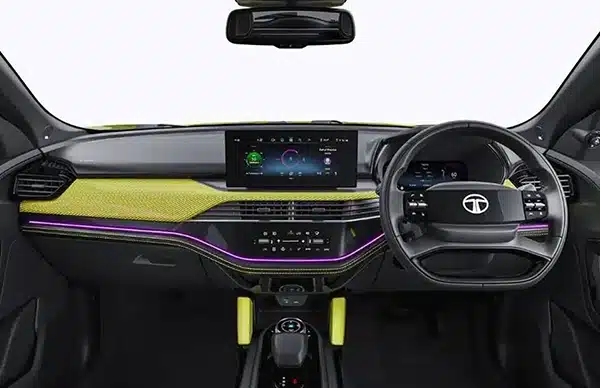
Five years ago, smartphones weren’t as advanced as they are today. Everything, from the camera to the connectivity to the apps, will be outdated in 2024. A car like the Harrier, which was launched in 2019, would not have the same technology as a car launched today. Take a look at the above pictures of the Harrier.
Notice any obvious tech differences? The 12.3-inch infotainment display is much bigger than the previous 8.8-inch screen and has a new placement. The previous steering wheel had mounted analog controls, which the facelifted Harrier swaps for touch controls. There’s a new 10.25-inch digital driver’s display behind the wheel. There are also updates you can’t see—wireless AppleCarPlay and Android Auto connectivity, a new speaker, a 360-degree camera…
Don’t worry, we’re not trying to sell you the Tata Harrier. As you can see, the facelifted Harrier features a lot of tech that wasn’t the norm for 2019 but is standard across most cars now. Thanks to its facelift, the car is still highly in demand.
Carmakers find it easier to make tech updates to facelifted cars. Recently, we’ve observed that facelifts come with bigger infotainment screens, more features like a wireless charging pad, better connectivity with the help of wireless Android Auto and AppleCarPlay, and additional safety features such as regenerative braking in EVs, automatic emergency braking, pedestrian detection, as well as speed and seatbelt warnings.
Powertrain Updates:
It is much rarer to introduce mechanical changes during facelifts. Making changes to the car’s mechanical components of the chassis will usually require more money. Mechanical changes become unavoidable sometimes, as the car may feature an outdated engine or one that doesn’t meet new emission regulations.
What is facelift car going to do differently from the old model? The car’s existing parts are usually upgraded to improve certain aspects of its performance. For example, an EV may be fitted with a larger battery or modified for quicker charging time. Similarly, a sports car may get performance-based tweaks. One example is the Toyota GR86, which was fitted with Sachs dampers and Brembo brakes as standard on some trims and optional on others.
A car’s engine may be tweaked or newer engine options may be introduced. Car facelifts may introduce a hybrid powertrain, AWD, or better gearboxes. Certain chassis parts may be changed as well. Mechanical changes ensure that facelifted cars are on par with the newer cars being launched.
Did You Know?
Alfred P. Sloan, CEO of General Motors, is often credited with introducing the concept of annual facelifts. This strategy helped GM regain the market share it lost to American carmaker Ford.
Annual facelifts became the norm in the US market, so much so that American car models are often distinguished by model year. For example, the 2023 Corolla Cross will not be considered the same as the 2024 Toyota Corolla Cross, even though there might be no differences between the two.
Can Buying A Facelifted Car Save Me Money?
If you’re wondering what is facelift car going to cost, it’s always more expensive than its outgoing counterpart. However, once a facelift is launched, sellers and showrooms offer discounts on the older model so they can quickly get rid of existing stock. So, if the facelift’s style doesn’t appeal to you and you’re okay with driving a slightly outdated car, you’ll end up saving money if you buy the older model.
Should I Wait For the Facelifted Version?
So you’ve got your eye on a particular car. Lately, you’ve been hearing that there will be a facelift launched soon. Do you buy the car that you already like, or wait for the refreshed version in case it’s better?
Facelifts aren’t always a good thing. Styling, especially automotive styling, can be highly subjective. Many people thought that the Maruti Suzuki S-Cross looked better before its facelift. But the S-Cross’s sales boomed after, which means many others liked the facelift more. You may either love a facelifted car’s styling or end up disappointed.
But that’s precisely why it’s better to wait for the facelift. You see, a facelift costs the company more in production. So they are usually priced higher than pre-facelift cars. If you end up not liking the facelifted car, you could get a better deal on the older model. Either way, what’s there to lose?
Also read: Just-Launched 5-Seater Thar Roxx
Why Are Car Facelifts Relevant?
So are facelifts necessary? Let’s take a look at why they’re important in the automotive industry.
Facelifts Keep Car Models Relevant:
- A car model has a lifespan of about 6–8 years. Post-launch, people are excited. After the initial explosion of sales, the car lost its novelty but is considered more reliable than newer car models. At this point in the car’s life cycle, a facelift will let people know of its updated features and inform new audiences of its existence as well.
Facelifts Make the Market More Competitive:
If there’s one thing you can take away from the impact of globalization, it’s that more competition creates better products. Since there are so many options available, people will always go for what they consider more useful or valuable. If one carmaker introduces a facelift with a larger infotainment, its rivals will also be likely to do the same. So the buyer gets better choices due to facelifts.
Facelifts Provide a Better Driving Experience:
Many times when a car is launched, the company focuses on eliminating safety issues and basic niggles. Unless the car is performance-oriented, certain elements like steering or handling may be overlooked. Upgrading the braking to feel sharper and the suspension system to feel more responsive may make a facelifted car more enjoyable to drive.
Examples of Well-Known Car Facelifts
Now that we’ve covered what is facelift car and why facelifts matter, let’s take a look at a few real-life examples of models that have undergone this process:

Tata Nexon: The old Nexon looks sporty, but the facelifted version appears much sleeker and more futuristic. Do you like the older Nexon (right) or the newer one (left)?
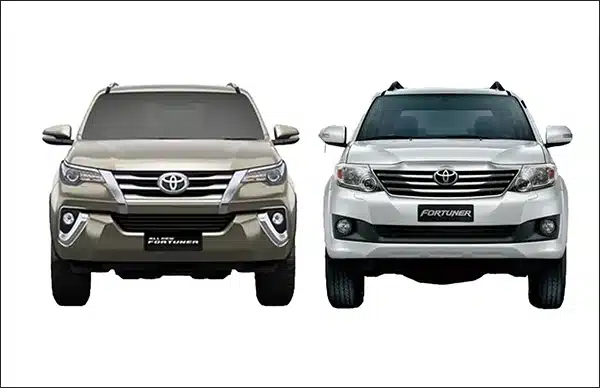
Toyota Fortuner: The Fortuner’s facelift makes it look more modern, butch, and sleek than the previous version. The headlamps, fog lights, and grille have all been restyled to create a unique and handsome front fascia. Of course, the Fortuner features changes in the rear and interior too.
Frequently Asked Questions:
What is the meaning of facelift in cars?
A car facelift is a mid-generational refresh when the company launches a ‘newer’ version of a car model with interior and exterior changes. Facelifts aim to update the car’s styling and features.
How can we tell the difference between facelift and normal car?
The facelift will usually be slightly different from the old car. Changes may include redesigned or resized exterior features, restyled interiors, better tech, or engine upgrades.
What are the pros of buying a facelifted car?
The pros of buying a facelifted car include higher resale value, better features, more reliability, improved looks, and updated systems and parts.



